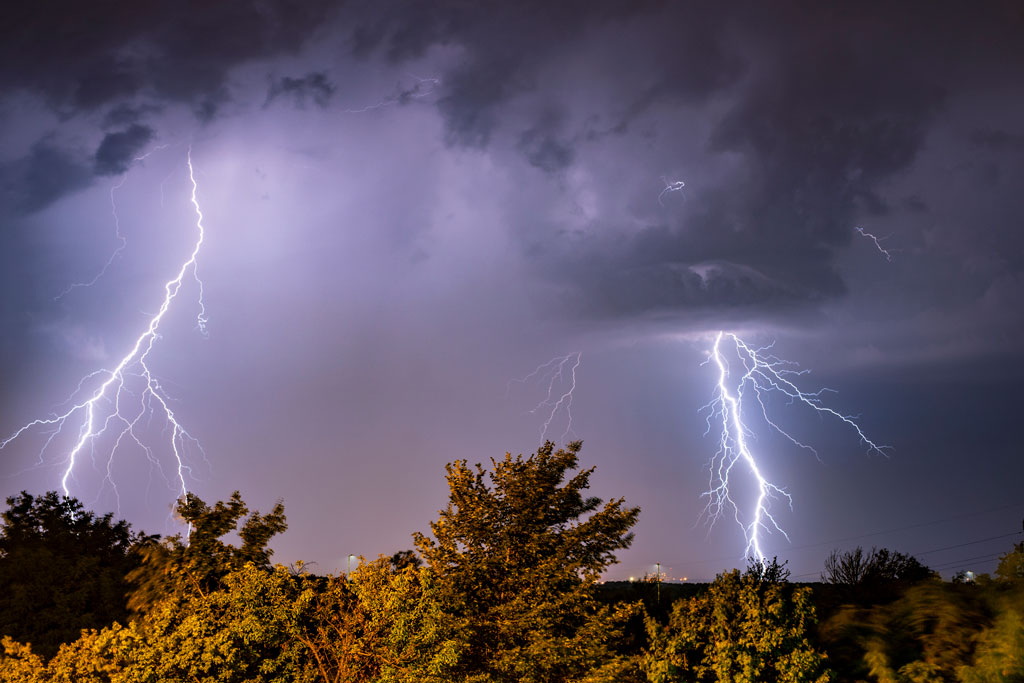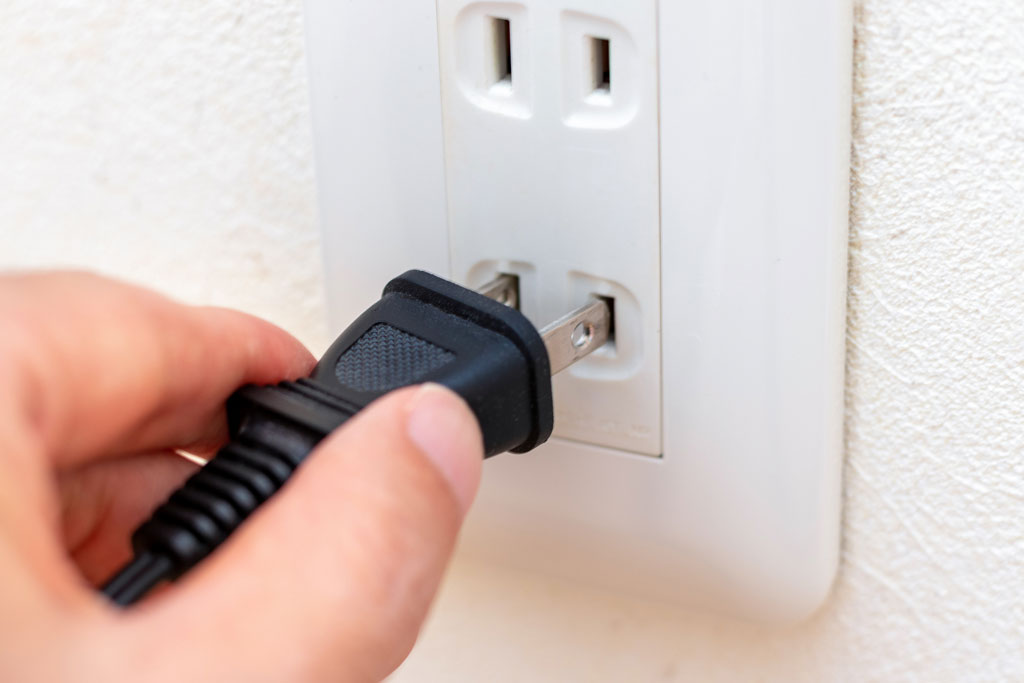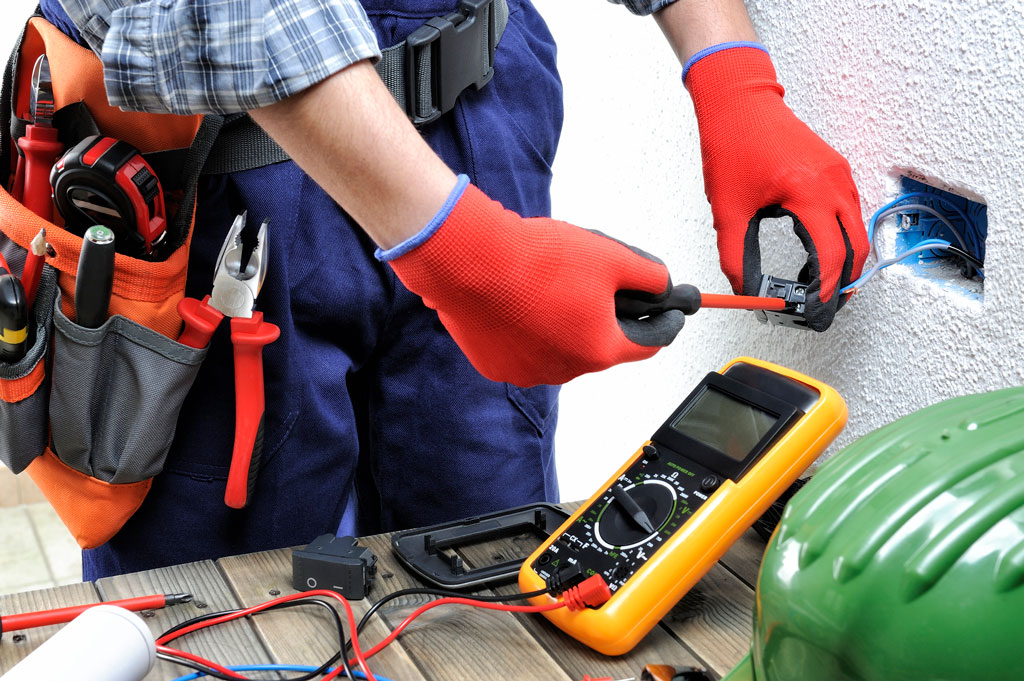
The electrical technology world can be very complicated and confusing for most homeowners. For instance, terms such as surge arrestors and lightning arresters are usually assumed to mean the same thing. However, these are two different devices with different meanings and functions. Therefore, knowing the difference between these two devices is vital to protect your home better. The main difference is that one is installed inside your home and buildings while the other is fitted outside. This article will shed more light on each arrestor type, what they are, and their various comparisons. It is, however, essential to note that in both cases, they provide safety to your electrical appliances and reduce the chances of calling an electrician.
What is a Lightning Arrestor?
Lightning is one of the major reasons for voltage surges in most homes. A lightning arrestor is a high voltage and terminal ground circuit that keeps lightning from destroying electric power and telecommunication structures. Notably, surges with a high voltage that only lasts for a short period, sparks, lightning-caused surge currents, and isolation arcs, among others, are referred to as lightning surges.
Therefore, a lighting arrestor protects electrical power systems from an abnormal voltage or voltage that the system is not designed to handle by redirecting these surges straight to the ground. Hence, the equipment has a fast-conducting ground terminal. At the same time, a ground wire, known as earthing, protects these systems from direct lightning. They are installed on top of buildings, tall structures like towers, and even transmission poles to ensure a safe route to this excess discharging current.
How Does a Lightning Arrestor Work?
The working of a lightning arrestor is quite simple. The voltage with the surge goes through the arrestor on the mounting zone through a conductor. Through the insulation made in the arrestor, the voltage surge is interrupted for a moment for it to move toward the ground. Therefore, once the voltage returns to the fixed value, the conductor and ground’s insulation return to normal. Consequently, the current moving down to the ground stops immediately. Lightning arrestors are usually found near devices, appliances, or structures that need protection. Hence, they are installed within a range of the phase and ground with a fluctuating current system, ground, and pole around a direct current network.
What is a Surge Arrestor?
Electricians recommend that all electrical equipment and appliances draw their voltage from a power system fitted with a surge arrestor. A surge arrestor is a protective gadget that limits the voltage on an electrical appliance or equipment by providing a means to discharge or bypass the excess current. This equipment can direct the surge current to the ground or stop the flow, and it can repeat this process repeatedly, depending on the circumstances. However, a surge arrestor is not to be confused with a lightning arrestor. These devices do not absorb or prevent lightning but instead protect the electric equipment, which can range from a utility substation to a home. Surge arrestors are usually erected in pad-mounted transformers, pole-mounted riser poles, substations, and circuit breakers fitted in homes.
Lightning is one among the many voltage surges experienced in the main power lines that is random and cannot be timed. It is one of the primary sources of power surges, as it is estimated that 100 strikes of lightning occur on the earth’s surface each second. Therefore, electrical appliance protection against lighting is the ultimate recommendation. The other voltage surges include switching surges and overvoltage, which occur temporarily due to faults from the ground. During over-voltage, the single-phase voltage will likely move to the not faulty phases and stay there until it is solved. Switching surges are excess voltage that results from operation alterations or energy holding and releases along phases.
The Comparisons Between Lightning Arrestors and Surge Arrestors
The main comparison between these two arrestors is that lightning arrestors protect electrical equipment externally and are therefore fitted outside structures. Surge arrestors, on the other hand, provide protection internally. For lightning arrestors, installation is done with limitations to the exterior of panel boards; for surge arrestors, installation is done inside the boards. While surge arrestors offer protection to the entire system, lightning arrestors change the course of the voltage surge electricity to the ground passing within the arrestor gadgets.
Lightning arrestors provide the function primarily for lightning strikes and related surges. Surge arrestors redirect and limit the excess energy to the ground, which is not necessarily from lighting. For lightning arrestors, the types include a sphere, rods, electrolyte, metal oxides, or even a multi gap, while in surge arrestors, the types are either a signal, fiber tube, direct current, a station, low-voltage, a distribution, neutral point protection, or a network. Lighting arrestors can also act as surge arrestors, but the surge arrestor can only be used as a surge arrestor.
Choosing Between a Surge or a Lightning Arrestor
It is best to consult an electrician when choosing between these two devices. The professional will help you pick the best option depending on how they assess your equipment and identify what needs protection. Regardless of your chosen device, the most crucial factor to consider is what you are protecting since both devices protect your equipment.
Therefore, when you need help deciding which device to install for your appliances’ protection or are in doubt, seek a professional, experienced, certified electrician who can guide you to the right device. This is because every home has different advantages and disadvantages, which vary the protection needs and the ideal protection device.
Electrical appliances must be protected from voltage and current surges to reduce maintenance and repair costs. Do you need help installing a lighting or surge arrestor at your home? Contact us at Mister Sparky of East Texas today for a professional, fast, and reliable installation.
See our most recent blog on this topic here.
Check out our reviews here.
Photo By bgfoto at iStock
What Are The Views Of Your Electrical Services Professional On Backstabbed Electrical Outlets?
Have you ever heard of the term “backstabbed” used in reference to electrical outlets? You might have thought that whoever said it was trying to be funny. However, electrical outlet backstabbing isn’t of this kind. Backstabbing cables in electrical outlets is a shortcut some homeowners take when securing wires in an electrical switch or outlet. Unfortunately, any electrical services provider will tell you that backstabbing wires poses a serious electrical hazard. An electrical outlet is said to be backstabbed whenever the neutral white wires and other hot cabling aren’t screwed down but pushed into the holes of an outlet instead. However, this exposes your home to the risk of a fire hazard and may cause other forms of damage to your electrical system. This practice is common in older homes with somewhat aged electrical outlets that don’t fit today’s standards. Hence, you should identify it and have it corrected. Knowing what backstabbing an electrical outlet is and taking steps to fix it could save your life.
What is a Backstabbed Outlet?
These are the outlets where the wires at the back of an outlet are stripped and pushed into the connector at the back. Unfortunately, using this shortcut for whatever reason means that the connectors at the neck of an outlet will hold the electrical wires loosely. Rather than insert the wiring into the outlet, remove the entire unit, including its casing, and screw the wires firmly to the terminals within. Since the wiring is ‘stabbed’ instead of being screwed down, they’re not as secure as supposed. While the wires generally don’t move, they need to be secure. It is for this reason that the wires should be screwed down. In many cases, this might appear alright as the outlet will never be moved. However, the wiring might sometimes fall out or even move, especially when disturbed.
When Were Such Setups Commonly Used?
Backstabbing electrical outlets was popular and common in the 70s and 80s. However, they still are a common sighting today. Since backstabbing was cheaper than installing outlets and there were no laws against it, many homeowners preferred the theme at the time. Because of the issues that followed backstabbing outlets, it was prohibited to backstab outlets having a 12-gauge wiring. However, you could still backstab a wire that is 14 gauge. However, although NEC hasn’t banned backstabbing a 14-gauge wire on an electrical outlet, it is worth noting that there are dangers to this. Hence, you should explore options or consult an electrical services provider before using this unsafe practice.
Why Backstabbed Outlets a Bad Practice?
When wiring an outlet, all the wiring must be firmly secured. This is required to ensure safety. However, it can’t be guaranteed that wiring will remain secure with backstabbing, and it is for this reason that issues arise. The holes used for backstabbing feature a piece of metal called the ‘blade.’ The blade connects the receptacle to the wiring inside the outlet’s hole. This way, the wire connects to the device. If you compare it to wrapping the wiring with some fastened screw, the connection between the wire and the blade is minimal. And this could be the reason why some homeowners still use backstabbing to save time. But is this worth the associated risks?
In backstabbed outlets, the pressure within the hole between the wire and the blade is the only connection the wire has. The device cools and warms repeatedly, making the connection slightly jostled. With enough time, the activities will loosen the connection to an extent where the wire and blade might fall out. When the wiring becomes loose, it can cause;
- Physical damage to your electrical outlets because of overheating Could singe or melt the wires and other components of the outlet.
- Interrupted or complete power loss in the electrical outlet. Other outlets in the electrical circuits could also be affected by tripping or shorting.
- An electrical fire might arise from the sparks and shorting should they come too close or connect to other wires.
Are Backstabbed Outlets Safe?
Any electrical services pro will tell you that backstabbed outlets are unsafe. Although it is not guaranteed that a backstabbed outlet may cause a fire or even damage, it is highly likely to compare to outlets where the wiring is securely screwed. The longer the wiring is left backstabbed, the higher the likelihood that a loosened cable will cause a fault.
Therefore, if a backstabbed outlet has been properly working over the years, should you leave it or hire a professional to pull out the wires and screw them down? By itself, electricity is dangerous. Hence, if you must take shortcuts with wiring or equipment, you should always take the safest route and remedy any known issues. Thus, you should have the wire pulled out, screwed, and connected back by a professional.
Since backstabbing an electrical outlet today is considered hazardous and a shortcut, you should refrain from using the practice. Fortunately, most appliances now have a connector plug that you attach to an outlet. If the appliance doesn’t, it is safer to have an electrical technician screw the wiring and connect it to the receptacle. So, if you purchase an old home and find that outlets are backstabbed, it’s best to have an electrical services technician screw the wiring down securely for safety.
Say No to Backstabbing Electrical Outlets
Any professional will tell you that a backstabbed outlet is generally unsafe. Hence, should you purchase an older home and realize the outlets are backstabbed, an electrical technician should correct it immediately for safety. The last thing you want is to suffer electrical shocks and fires because of the spark between the outlet and the wiring. Always take the safest rather than the shortest route regarding electrical connections and equipment. Do you need help inspecting the electrical systems at your home? Contact us at Mister Sparky of East Texas to book an appointment.
See our most recent blog on this topic here.
Photo By Toru Kimura at iStock
Types Of Smoke Detectors An Electrician Installs To Protect Homes
Electrical safety is vital in homes to protect you, your loved ones, and valuables from the dangers of fire outbreaks. Household fires can result from many things, including appliances, candles, fireplaces, space heaters, or electrical faults. They account for 46,700 home fires from 2015 to 2019. Smoke detectors are essential systems that alert people of fires. They are the reason for reduced fire deaths and injuries in homes.
The National Fire Alarm and Signaling Code (NFPA 72) requires all homes to have smoke detectors or alarms in and out of sleeping rooms. The systems should also be on each floor of a mansion or flat, with larger homes having more than one. The life-saving units give you time to run in case of an electrical fire.
When the installed smoke-detecting devices sense the presence of smoke, it alerts the control panel. The fire alarm control panel then prompts the fire alarm system if a fire breaks out. There are different types of smoke detectors that you can have installed in your house, including:
Photoelectric Smoke Detectors
An electrician can recommend the installation of photoelectric or optical smoke-detecting devices. They use a light beam in smoke detection, especially from smoldering sources such as electrical appliances.
The device is triggered when smoke from scattering lights enters the chambers. When the smoke from the smoldering fires enters the smoke chamber, it turns the light sensors on, making the alarm sound. They are a better choice for kitchens and bedrooms because of their faster response to smoke before it turns into flames.
Electrical experts install the devices on walls or ceilings of rooms or places with a higher risk of smoke buildup for optimal performance. The units require monthly testing of their functionality by pressing a test button. If the device fails to sound an alarm, get an electrical professional to replace it.
Advantages
- Photoelectric or optical smoke detection technologies are more sensitive to smoke from smoldering fires.
- They are accurate because they rarely sound false alarms, implying the need to run and call for help whenever the system is triggered.
- The devices are reliable in detecting most electrical fires when in perfect working condition.
- They provide early warning for a quick response.
- Photoelectric smoke sensors are also durable and can last long with periodic maintenance.
- The units require little to no maintenance.
- They are also battery and electricity powered.
Disadvantages
- Photoelectric smoke detectors are hard to install because of their complexity and need to connect to other devices in the system.
- Smoke detectors are more costly than ionization systems.
- They are less responsive to the smoke that fast-burning fires produce.
Ionization Smoke Detectors
You can also invest in ionization smoke-detecting devices. They are electrically charged plates with radioactive materials that ionize the air. According to the U.S. Environmental Protection Agency, the radioactive material is americium, which helps detect smoke. The devices also comprise an ionization chamber, alpha particles, and smoke-sensing particles.
They also use batteries that require replacement bi-annually to run smoothly for smoke detection. When the systems detect smoke, they disrupt the ions in air molecules, activating the alarms. Damaged ionization smoke detectors can be a health hazard when the radioactive material leaks, hence the need for regular tune-ups by a qualified and skilled electrician.
Pros of the Device
- Ionization smoke-detecting units are less costly than photoelectric systems.
- They are more sensitive to smoke from flaming fires.
- The devices operate using batteries or electricity.
Cons of Ionization Units
- The smoke detectors can trigger false alarms, which are a nuisance.
- When poorly handled or damaged, radiation in the smoke detecting devices can pose high health risks.
- Ionization smoke sensors do not detect smoldering fires due to their slow-burning nature.
Dual Smoke Detectors
You can also have an electrician install dual smoke-detecting devices in your home to provide an early warning of possible fire outbreaks. They comprise photoelectric and ionization smoke detectors, merging for the best protection against flaming and smoldering fires.
For better and more advanced performance in detecting smoke and fires, have dual smoke detection technologies in different rooms in your house. The device combines units with higher and lower chances of false alarms. You can have peace of mind as the nuisance of running for nothing will reduce.
Advantages of Dual Smoke Detectors
- Your home receives comprehensive protection against all types of fires.
- The dual smoke-detecting devices provide a faster response to smoke than one single unit
- These units can still operate even during blackouts because of the use of batteries.
- Dual sensors are also easy to use
- They are also light in weight.
Downsides of Dual Smoke Detectors
- Dual smoke detectors are highly costly than single photoelectric and ionization devices.
- It has higher installation expenses than the two single smoke detectors.
- The combined smoke-detecting units need constant maintenance of battery replacement, functionality testing, and cleaning. The process should be on a monthly or bi-annual basis.
- They might not be compatible with the security system installed in your home.
Do You Need Smoke Detectors?
If your residential or commercial building has no smoke detectors, it is time to have them by calling Mister Sparky of East Texas. You can count on our electrician to install smoke detection devices, electrical wiring, lighting systems, and EV chargers.
Our electrical technicians get the job done right and safely the first time. They receive continuous and extensive training that guarantees 100 percent satisfaction and peace of mind. So, when faced with electrical issues of whichever kind or magnitude, call us ASAP for top-not services.
Conclusion
Smoke detectors are a crucial safety-enhancing technology that all homes should have. Since they are life-saving devices, they should always be in perfect working condition. There are different options to choose from, including photoelectric and ionization. They respond differently to flaming and smoldering fires.
Luckily, dual smoke detectors are highly efficient in sensing fires, regardless of the type. Therefore, never overlook the importance of smoke detectors by ensuring you invest in them for increased protection.
See our most recent blog on this topic here.
Photo By M-Production at iStock
Important Factors To Consider When Hiring An Emergency Electrician
The electrical system is an integral part of your house. In addition to ensuring that your home is adequately lit, it makes it possible for you to safely power your electrical and electronic appliances. Unfortunately, although modern electrical systems are quite reliable and durable, they can develop problems that can negatively affect their performance and even put people and buildings in grave danger. Considering the sensitivity of residential electrical systems, most electrical issues you might run into will need to be addressed urgently. Therefore, you may feel the urge to fix them on your own. However, handling the electrical system is extremely dangerous, and no matter how much you enjoy getting your hands dirty, you should never be tempted to resolve electrical problems on your own unless you are a professional electrician. Instead, you should have a professional emergency electrician on speed dial.
However, if you do not have a reliable electrician already, finding one can be quite a daunting task since there are a lot of incompetent electricians out there. Therefore, when shopping for an electrician, you need to patiently do your due diligence. Below is a rundown of the important factors you should consider to increase your chances of settling for a good electrician.
Licensing
Professional electricians are usually regulated by local authorities. For them to offer their services legally, they need to be duly licensed. It is only after undergoing training and acquiring some experience that they qualify to receive their licenses. Therefore, licenses serve as proof of their qualification. As such, if you make the mistake of trusting an unlicensed emergency electrician with your electrical systems, they might incompetently handle your electrical issue and consequently put you and your family in grave danger. Therefore, as you consider hiring a given electrician, you need to ask them if they are duly licensed. A good electrician will be happy to show you their license. If you have reasons to believe that a given electrician is not duly licensed, you should not take the risk of hiring them.
Insurance
Electrical jobs usually involve the risk of serious accidents. For instance, the job could leave the person doing it with serious electrical injuries. Unfortunately, if an electrician gets hurt while working in your house, you could risk getting held financially liable for their injuries. The good news is that good emergency electricians protect their customers against such risks by ensuring they are duly licensed. By hiring an insured electrician, you can rest assured that you will not be the one to be held financially liable in the event of an accident since their insurance will cover them. Therefore, before you can decide that you are going to hire a given electrician, you need to ascertain if they are insured. If they are not, hiring them will be too risky, and you should not do it.
Experience and Reputation
Electrical problems are quite technical. Therefore, electricians tend to get better at their work with experience. Indeed, the more the number of years an electrician has been in the business, the better they are likely to be at handling electrical issues. In any case, if an electrician has been in the business for more than a few years, it will be much easier for you to find the information you need to be able to judge them objectively based on the reputation they have built over the years. On the other hand, if you hire an inexperienced electrician, the risk of receiving substandard services will be quite high since they might be incompetent, and you may not have adequate information to assess their suitability. Therefore, as you try to assess the suitability of a given electrician, experience is one of the most important factors to consider. If an electrician has not been in the business for more than a few years, trusting them with something as sensitive and valuable as your electrical system will be quite naive of you, and you should avoid it completely.
Availability
In most cases, electrical emergencies strike without any notice. Therefore, although you can prepare for such emergencies, you cannot predict when they will come. It could be in the middle of the night and even on holidays or weekends. Therefore, as you shop for the best emergency electrician to have on speed dial, availability is one of the most important factors to consider. A good electrician should be willing and able to respond to your calls of distress on any day at any time. As such, before you can settle for a given electrician, you need to ask them if they are always available. If the electrician you are about to hire does not offer 24/7 emergency services, you should continue searching since they may not be there for you when you need them most.
Warranty
No matter how qualified an electrician may be, you cannot be sure that they will do a good job. This is because they can make mistakes and fail to meet your expectations for one reason or another. Therefore, even after paying top dollar for emergency electrical services, you may be forced to spend more money on the same issue within a few days or weeks. The good news is that good electricians protect their customers from such risks by issuing warranties for the services offered. With a warranty, you will be entitled to getting the job redone for free should the problems at hand reoccur within a specified time. Therefore, before you can allow an electrician to lay their hands on your electrical system, you need to ascertain if you will get a warranty. If they don’t offer warranties for the services offered, trusting them will be too risky.
The Bottom Line
If you are looking for an electrician you can trust to help you handle electrical emergencies of all kinds and magnitudes, Mister Sparky of East Texas is the answer. Feel free to get in touch with us today for more information about our company and services.
See our most recent blog on this topic here.
Photo By francescomoufotografo at iStock
What Does Your Reliable Electrician Have To Say Regarding Pool Electrical Safety Precautions?
Are you planning to put up a new pool in your home compound? Or do you have one already constructed? A swimming pool is an exciting source of relaxation, especially in the hot season. Regardless, you may have had an electrician install some electrical components such as lights, heat pumps, water pumps, and outlets where you can charge your electronic devices. Like with any other large home installation, there are several things you should know before you jump into the pool for a swim. Whether a cold or a warm swim, below are 4 things you must consider to ensure that you or whoever is in the pool are safe from electrical issues.
Four Things to Keep in Mind for Swimming Pool Safety
Recognizing Risks
Whether a new or experienced pool owner, you should understand all the pool hazards, including electrical ones. You also must understand that not all the electrical hazards in your swimming pools arise underwater. If the breaker is tripping when you switch on the pool lighting, hot tub, or jets, there’s a high chance your system requires an upgrade. Do you use extension cords? Ensure they aren’t lying in puddles or dragged into the swimming pool. Water and electricity should never come into contact.
Lighting Issues
Does your pool lighting flicker or dim sometimes? That is a sign of mold or faulty wiring. This also could point to a water leak onto the naked wires, which is also not ideal, especially when dealing with electrical current. You should enlist an electrician for further inspection to address this problem. These professionals are experienced and skilled in outdoor electrical issues and can quickly get your swimming pool safely running to ensure that you continue enjoying your swim.
Wiring Gone Wrong
Do you smell or see melting or burning wires? Jump off the swimming pool and turn off the power supply at the mains and call a professional. Whether you are installing a new swimming pool or have had it for decades, wiring problems with in-wall lights and pool motors can arise anytime. Ensure that you check the wiring and lighting around the pool area regularly. Also, ensure that you have a routine electrical inspection done by a professional. This will be the safest way to ensure your swimming pool doesn’t become a death trap. The last thing you need is to be electrocuted in your swimming pool.
Pool Power
Accidents do happen, and they can happen at any moment or place, including around or in your swimming pool. For instance, you might drop an appliance or extension cord into your swimming pool accidentally. Whenever this happens, you should not reach out to extract the appliance or cord from the pool bare-handed. First, you should disconnect the appliance or cord from the electrical mains. Then, wear some rubber gloves to remove the appliance from the pool. Since such accidents could result in short-circuiting, ensure that an electrician comes for an inspection of your electrical wiring and appliances.
Best Practice Electrical Safety in Your Swimming Pool
Enjoying a swim in your pool is among the most relaxing activities. Some people use their pools to clean their heads or as therapy. However, if you do not practice electrical safety, this could be a dangerous activity. As a rule of thumb, always remember that water and electricity don’t mix. So, how can one best practice electrical safety in their pool?
Keeping Electrical Appliances Away from the Pool
Whether a radio, mobile phone, or electric BBQ, electronic devices should always be left about 10 ft. away from any water source, including the pool. If possible, use battery-operated electrical devices. If these devices fall into the pool while plugged in, that could expose you to a risk of electrocution.
Never Touch Electronic Devices While Wet
You should keep the electrical appliances away from the water and ensure you do not handle them when wet. Whether you are just coming to answer a phone call directly from your swimming pool or are damp and have remembered that your favorite TV program is about to start, you should wipe your hands dry before touching the electronics.
Use GFCI Outlets
Ground fault circuit interrupters or GFCI outlets are a great investment for any homeowner. They are critical for preventing electric shock injuries and electrocutions. GFCI is a special kind of outlet designed for detecting electrical power imbalances. Whenever it detects an electrical imbalance, no matter how minor, it automatically shuts off the power before an electric shock injury possibly arises. As per National Electric Code (NEC), you need GFCI protection for your pool’s electrical equipment, including the outdoor power outlets. If you haven’t installed GFCI outlets or are unsure, have an electrician come for an inspection.
Do Not Swim When There’s a Storm
Did you know that water is a good conductor of electricity and lightning often strikes it? That’s why it is not a great idea for you to swim when there are thunderstorms and lightning. Swimming under such conditions exposes you to a risk of death by lightning or even severe injuries. So, whenever you see lightning or hear thunder while enjoying a swim, you should take that as a cue to leave the pool.
Have Your Pool Inspected Regularly
You should have your pool inspected by a professional at least once annually. This will help ensure that all developing issues are caught by the electrical repair professional and addressed. The professional will examine your pool’s electrical components and recommend solutions if any are damaged or faulty. They also will ensure that the pool’s GFCI is compliant to code, protected, and energy efficient.
Do you have a swimming pool in your compound? You should always observe basic electrical safety precautions. For pool electrical component installation, inspection, and maintenance, contact us at Mister Sparky of East Texas.
See our most recent blog on this topic here.
Photo By Di_Media at iStock













